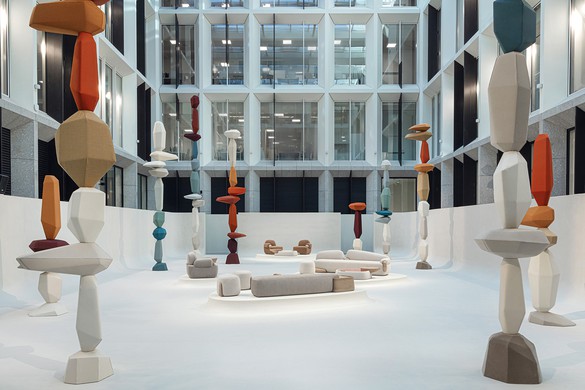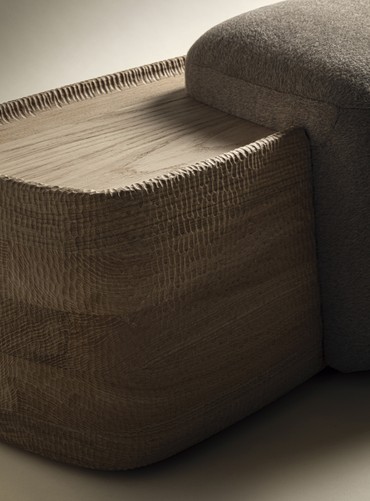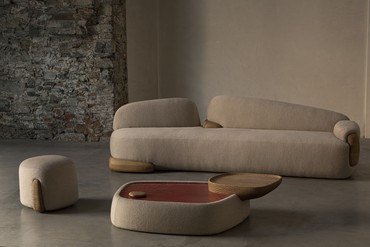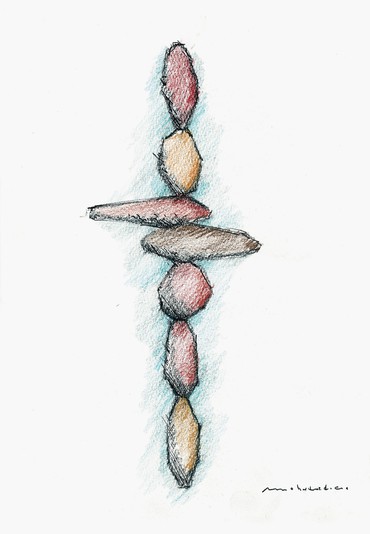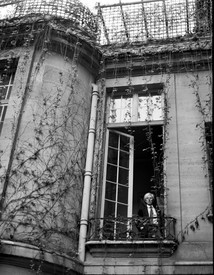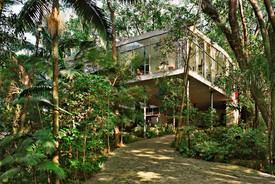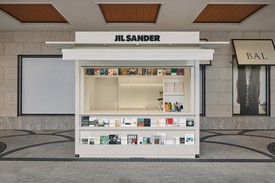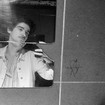
Wyatt Allgeier is a writer and an editor for Gagosien Quarterly. He lives and works in New York City.

Cristián Mohaded is an Argentine artist and designer. He is a graduate of the National University of Córdoba, and today he shares his time between Buenos Aires and Milan.
Wyatt AllgeierBefore we discuss Apacheta, could you talk about your background, your education, and the development of your process?
Cristián MohadedI was born in Recreo, a little town in the Catamarca province of Argentina. From there, I moved to Córdoba to study industrial design at the public university. From the beginning, my approach was more akin to an artist’s, but at that moment the practicality of design was appealing. While the discipline of industrial design is more rigid, the study of it allowed for experimentation and direct engagement with materials, techniques, and development. Year by year, I discovered more about my approach, and eventually I left behind the term “industrial designer”—I prefer to say just “designer.” In 2011, I began working on projects with artisans from Argentina, and this remains core to my practice. Argentina is a large country, and it was clear to me that all the materials I could hope to work with were here—we have textiles, stone, metal, wood, as well as incredible artisans who know these materials intimately.
In 2019, I was invited by the Museo Nacional de Arte Decorativo in Buenos Aires to develop my designs and process. This was a big opportunity to communicate not only with my fellow Argentinians, but to a larger audience of travelers passing through the capital as well. I was very ambitious, choosing to work with more than thirty artists from different regions, utilizing various materials, from textiles to ceramics. The exhibition was titled Territorio híbrido [Hybrid territory], and it involved looking back at Argentina’s history—specifically the 1930s, with figures like Jean-Michel Frank and Ignacio Pirovano engaging with radical design projects in the country—but also looking forward to what new techniques and creations are on the horizon. It was important to work through design to tell a story, rather than just exhibit some pieces. At the end of this exhibition, and others since, I invited all the artisans to come and meet with journalists, where they gave a presentation about their lives and what they do. These stories are as important to me as the final objects.
WAHow did this project with Loro Piana Interiors for the Salone del Mobile come about?
CMI met Francesco Pergamo, the director of Loro Piana Interiors, through a friend. When we met, he was already familiar with my work, and we remained in touch, thinking about ways to collaborate. Then, last June, I visited Milan, and we had a more focused discussion, thinking through concepts and presentations. He told me, We want something that stays true to your stories, your approach to design and materials. Quickly, it became clear that the idea of travel would be a good place to start. For years now, what do I do? I travel, I discover. From there, the apachetas—which are these towers of stones that are collaboratively built over time by hikers in the Andes, acting as markers of important points on a trail—really crystallized as a core for the project.
I researched and worked on some specific proposals, and we officially initiated the project in September. This idea of the traveler has proved to be generative; I considered all the visitors who will come to Milan in April, and how this journey can be transformed into a new path, one that opens onto the landscape of Argentina. The color palette for the Apacheta towers is based on the different landscapes from the north to the south of Argentina, the lakes, the mountains, the glaciers, the desert.
WAWhat materials are being used for the project?
CMI wanted to create something very natural to represent this landscape and evoke its textures. Every piece is a combination of carved wood, textile, and ceramic—bringing together the rough texture of the wood and textile with the ceramic, which is shiny and crackled, like glass, to represent water.
WAI got a sense of that from your drawings. Is drawing an important part of your process?
CMDrawing is like freedom, no? You can explore the lines of your mind without restraint. It’s a process like travel, too. Drawing is not a job; it’s not work. It’s a moment to bring peace to my mind.
WAI understand that sustainability was integral to the production of these pieces, as well.
CMYes, sustainability has been one of the guidelines for both the furniture and the installation itself. We’re developing twelve towers, each between three and eight meters tall, that will be placed throughout the presentation in Milan. They’re amazing, and we’ve used textiles from Loro Piana that are no longer being sold, so it was an opportunity to revitalize this material in a sculptural manner.
WASince you’ve brought up the word “sculptural,” are there sculptors or other artists you’ve looked to for inspiration over the course of your career?
CMOf course: Michael Heizer, Donald Judd—I was lucky enough to visit Marfa, which has stuck with me—Jean-Michel Frank, the Campana Brothers, and Lucio Fontana come to mind immediately. I appreciate artists who are able to find some middle ground between being expressive and minimal; artists who allow their materials to speak for themselves, in a sense.
WAWhat do you hope the audience for the presentation will walk away with, whether intellectually, spiritually, emotionally—
CMSimply, I want viewers to rediscover how beautiful the world is. Everything we have around us . . . we don’t appreciate it enough. We overlook it.
We have a ritual in Argentina that takes place in the north, close to Bolivia, every November: a big festival to say thank you to the Pachamama. It’s a time to give thanks to the earth, which feels missing from the pace of our lives now. We might go to the beach or to the mountains, but I think we really don’t appreciate them. If we did, there would be more concern about climate change. So, really, I just hope that viewers will have a quiet moment to think about materials, about stones, about travel, and be able to take a sense of gratitude forward with them in their lives.
Photos: courtesy Loro Piana Interiors
